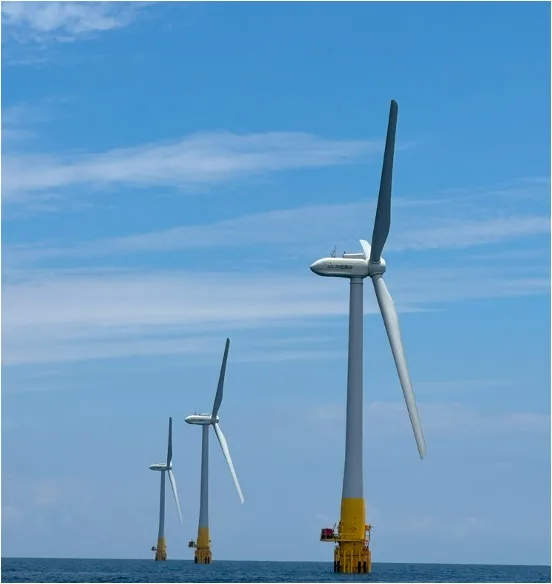

Floating Offshore Wind Farms Attract Japanese Horse Mackerel
A research team led by Associate Professor Mitsuharu Yagi and graduate student Shimpei Tsuchida, both from the Graduate School of Integrated Science and Technology at Nagasaki University has demonstrated, using environmental DNA (eDNA) analysis, that the construction of floating offshore wind farms (F-OWFs) off the coast of Goto Islands, Kyushu, Japan (Fig. 1), may have a fish aggregation effect.
Through year-round monitoring, the team detected a high concentration of Japanese horse mackerel (Trachurus japonicus) DNA fragments in waters surrounding F-OWFs. This suggests that the species may be aggregating near the turbines, providing significant evidence that F-OWFs can influence fish behavior and distribution.
The deployment of floating offshore wind power is still in its early stages globally, and those off the coast of Goto Islands stand among the pioneering projects in Japan and beyond. This study sheds light on the ecological impact of these novel offshore structures, which function as new “landmarks” at sea, on surrounding fish communities. It offers critical insights for balancing the development of renewable energy with the conservation of marine ecosystems.
This research was supported by a grant from the Public Interest Incorporated Foundation Nippon Life Insurance Foundation under the theme “Research on Harmonizing Human Activities with Environmental Conservation.” The findings were published online ahead of print in the international journal Aquatic Conservation: Marine and Freshwater Ecosystems on July 16, 2025.

Fig. 1 Floating offshore wind power farms (F-OWFs)
at the site of this study near the Goto Islands, Kyushu, Japan.
Floating offshore wind farms (F-OWFs) are becoming key components of renewable energy production, yet their ecological impacts on marine ecosystems remain largely unexplored. Using environmental DNA (eDNA) analysis in the East China Sea, this study investigated the tendency of Japanese horse mackerel (Trachurus japonicus) to congregate beneath F-OWFs. Water samples were collected at stations near an F-OWF and control stations farther away at various depths and seasons. A total of 115 samples were analyzed, and eDNA of T. japonicus was detected in 83% of all samples. eDNA concentrations were significantly higher near an F-OWF (F-OWF stations) than at control stations. The highest recorded eDNA concentration reached 2,280 copies/L at an F-OWF station, whereas the maximum concentration at control stations was 783 copies/L. Seasonal variations were also observed, with lower concentrations in summer and higher concentrations from autumn to spring. Generalized linear model (GLM) analysis further revealed that wind turbines had a significant influence on eDNA concentration, whereas other environmental variables, such as water temperature and depth, were not significant. These findings suggest that F-OWFs may function as artificial reefs, providing habitat for T. japonicus and influencing fish distributions at both spatial and temporal scales. However, potential conflicts with fisheries due to spatial restrictions, displacement of fishery resources, and increased navigation costs necessitate further long-term ecological and socio-economic assessments. Integration of eDNA monitoring with traditional survey methods, such as acoustic surveys and ROV observations, is crucial for coexistence of adaptive offshore wind farm management and sustainable fisheries. Future research should also explore long-term effects of F-OWFs on fish assemblages and biodiversity to support evidence-based decision-making for offshore energy development.
Keywords: environmental DNA, Trachurus japonicus, Offshore wind farms, East China Sea, Ecological risk
Journal: Aquatic Conservation: Marine and Freshwater Ecosystems
Title: Floating Offshore Wind Farms Attract Japanese Horse Mackerel
Authors:
Corresponding Author:
Mitsuharu Yagi
Email: yagi-m@nagasaki-u.ac.jp
Publication Date: July 16, 2025
DOI: https://onlinelibrary.wiley.com/doi/10.1002/aqc.70189
For more details, please see the full article on Nagasaki University’s Academic Output SITE.